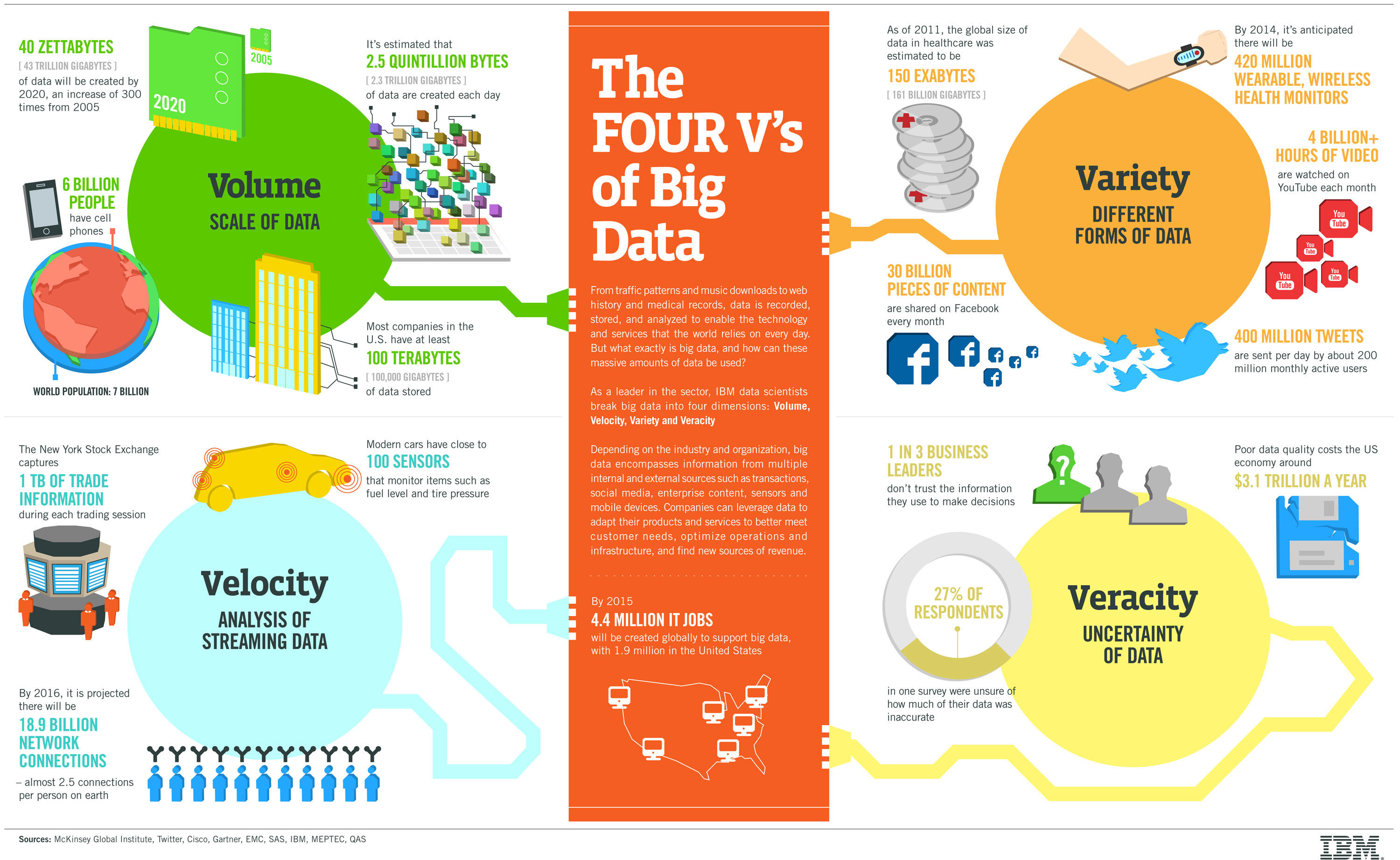"Big Data"

Department of Information Science
College of Computing and Informatics
Drexel University
Some common themes
What is "Big data?"
- Really, what's going on is:
- potential insights are a big deal, but
- effective utilization poses a big problem.
Required reading
> Who coined the term "Big data?"The three Vs of Big data
- In 2001, Doug Laney succinctly described big data by 3 Vs:
- Volume: The overall size of data
- Velocity: The rate at which new data emerges
- Variety: The differences in forms of data
Required reading:
The original 3 Vs of big data
The 3+ Vs of big data
- Some other Vs:
- Veracity: The uncertainties of data constitution
- Value: The usefulness of data
- Validity: The quality or trueness of data
- Variability: The changing nature of data
- Visualization: The visually-descriptive power of data
- Vagueness: Confusion over the meaning of big data
- Vocabulary: Structure metadata that provide context
Required reading:
Avoiding that "wanna-V" confusion
Maybe 4 Vs of big data?
- Some thoughts:
- The Vs are only a cute mnemonic for description.
- Any "keepers" should be distinct
- and should be data-intrinsic descriptions.
- This is probably why Veracity has had some staying power.
Volume
- At what size might data be big?
- One computer/drive/connection can't process/store/send it all?
- Coverage approaches the whole population?
Velocity
- At what rate might data be big?
- Equipment can only process 1/10 records in real time.
- An analysis informs of something before the news.
All of the Tweets for US
- Required readings:
Variety
- At what heterogeneity might data be big?
- An analysis combines a different model for 10 types of data.
- A comprehensive analysis identifies a combined effect.
Veracity
- At what state of disorder might data be big?
- Data are completely unstructured.
- Data captures insight from all levels of participation.
Recap
- Next time: Big data technologies
- How is big data stored?
- How is big data processed?